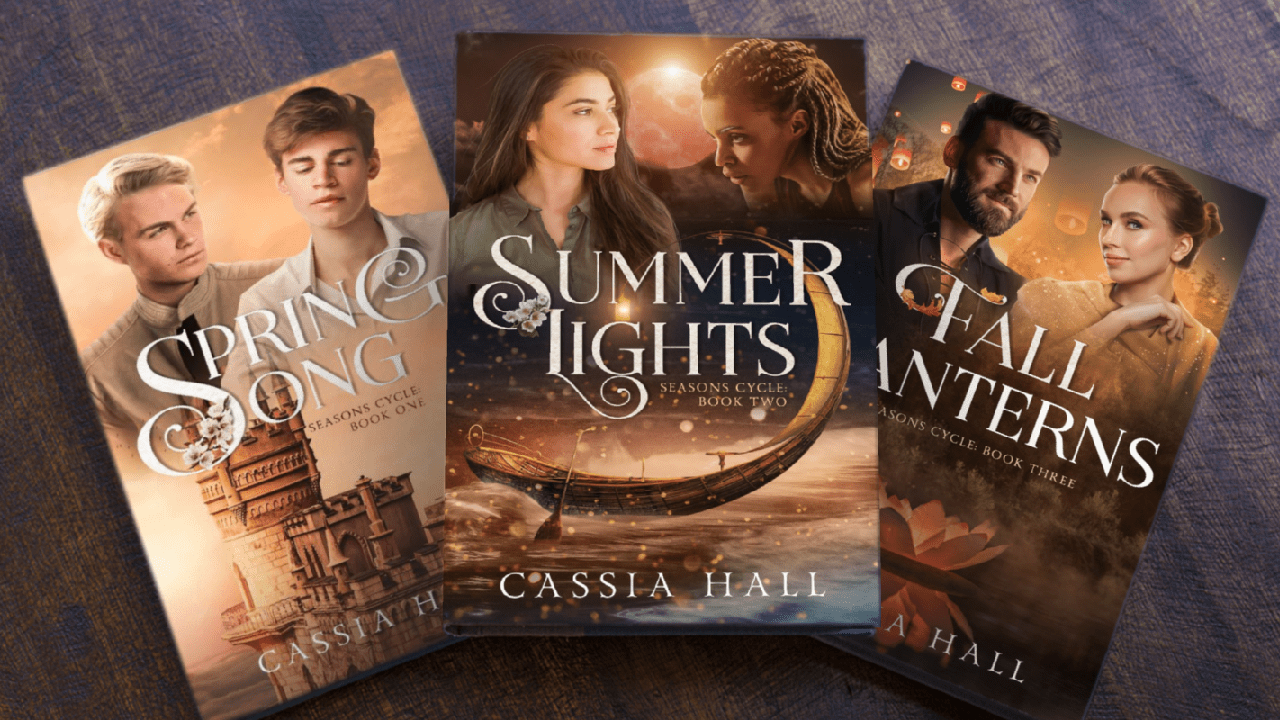Crafting the Perfect Finale: Reflections on Developmental Editing the Seasons Cycle Series

Three years ago, I embarked on an incredible journey when I was hired to help Cassia Hall with developmental editing for her debut novel, Spring Song, the first book in what would become the Seasons Cycle series. At the time, I was just starting out as a developmental editor, and this project became not just a milestone in my career but a testament to how much growth can occur over time. Now, having just completed the developmental editing for the final book in the series, Winter Wain, I find myself reflecting on the challenges, lessons, and evolution of my role in this creative partnership.
The Beginning: Finding My Way with Spring Song
When I first approached Spring Song, I was meeting the characters, the world, and the author’s vision for the first time. Much of my effort went into understanding the characters’ goals, beliefs, and motivations. This was crucial groundwork—learning what made these individuals tick so the story could resonate emotionally and thematically.
At that stage, my job was more reactive, discovering where the story needed clarity and helping Cassia refine her vision. As a first-time author, Cassia was understandably tentative, and I, as a new developmental editor, was still finding my stride. Together, we laid the foundation for the series, focusing on character development and ensuring the opening book set the tone for the journey ahead.
Building Momentum: Summer Lights
By the time we started Summer Lights, the second book in the series, I had gained more confidence in my role. I began taking a more active approach, rearranging scenes to improve pacing and strengthen the storyline.
Cassia and I had developed trust by then, which made the process smoother and more collaborative. While Cassia sometimes felt unsure about what steps to take, she trusted my instincts, and the results exceeded our expectations. This trust became the cornerstone of our work together, allowing us to take bold steps to refine the story.
Taking Bigger Leaps: Fall Lanterns
With the third book, Fall Lanterns, Cassia’s confidence in my suggestions was evident. When I proposed adding three new scenes at the beginning of the book to enhance character development and emotional depth, she didn’t hesitate. Instead, she trusted that the changes would work—and they did.
By this point, the editing process had become second nature to us. Our shared understanding of the characters, themes, and overarching series allowed us to make significant structural changes without hesitation.
The Ultimate Challenge: Winter Wain
Then came Winter Wain, the final book in the Seasons Cycle series—a culmination of years of work, creativity, and growth. Developmental editing a series finale is uniquely challenging because it has to accomplish so much:
- Resolve the Main Conflict: The series-long arc needed a satisfying conclusion, one that delivered emotional payoff while feeling earned and natural.
- Maintain Tension: Even with the main conflict resolved, it was important to leave threads of tension to keep readers engaged and excited for potential future stories.
- Introduce the Next Chapter: A good series finale doesn’t close every door. Instead, it sets up possibilities for new conflicts and adventures in the same world.
- Deliver the Twist: The hardest part of editing Winter Wain was finding that game-changing twist—a revelation that would reframe the entire series in a new light. This “aha” or “OMG” moment needed to feel both surprising and inevitable, a feat easier said than done.
Crafting the Twist: The Heart of the Finale
The twist in Winter Wain was a pivotal moment in the editing process. It had to achieve two goals simultaneously:
- Surprise readers in a way that felt fresh and exciting.
- Add depth and resonance to the entire series, encouraging readers to revisit earlier books with new understanding.
To accomplish this, I focused on a character whose flaw had been subtly woven throughout the series—a flaw readers might not have noticed but that ultimately played a major role in the story’s climax. This approach allowed us to meet readers’ expectations while still delivering the unexpected.
Balancing Vision and Expectations
As a developmental editor, my role extended beyond polishing plotlines and pacing. I also needed to help Cassia balance her creative vision with the expectations of her audience. Fans of the Seasons Cycle series had followed these characters for years, and the pressure to deliver a satisfying conclusion was immense.
By keeping the characters’ emotional journeys at the forefront and ensuring that the narrative stayed true to the series’ core themes, we created an ending that honored the story while leaving room for future possibilities.
Lessons Learned and Moving Forward
Looking back, the Seasons Cycle series represents not just a creative collaboration but also a personal journey for me as a developmental editor. With each book, I grew more confident, more attuned to the needs of both the story and the author.
The challenges of Winter Wain—resolving conflicts, crafting the twist, and setting the stage for the next chapter—were some of the most rewarding experiences of my career. And as Cassia and I close this chapter, I carry forward the lessons I’ve learned, excited to tackle whatever story comes next.
Final Thoughts
Editing the final book of a series is both a privilege and a challenge. It’s the chance to bring years of storytelling to a powerful, satisfying conclusion while leaving readers eager for more. For authors and editors alike, the process requires trust, creativity, and a deep love for the craft.
If you’re working on a series finale—or even just dreaming of starting your first book—remember that every step, every challenge, and every twist is part of the journey. And the ending? That’s where the magic happens.
